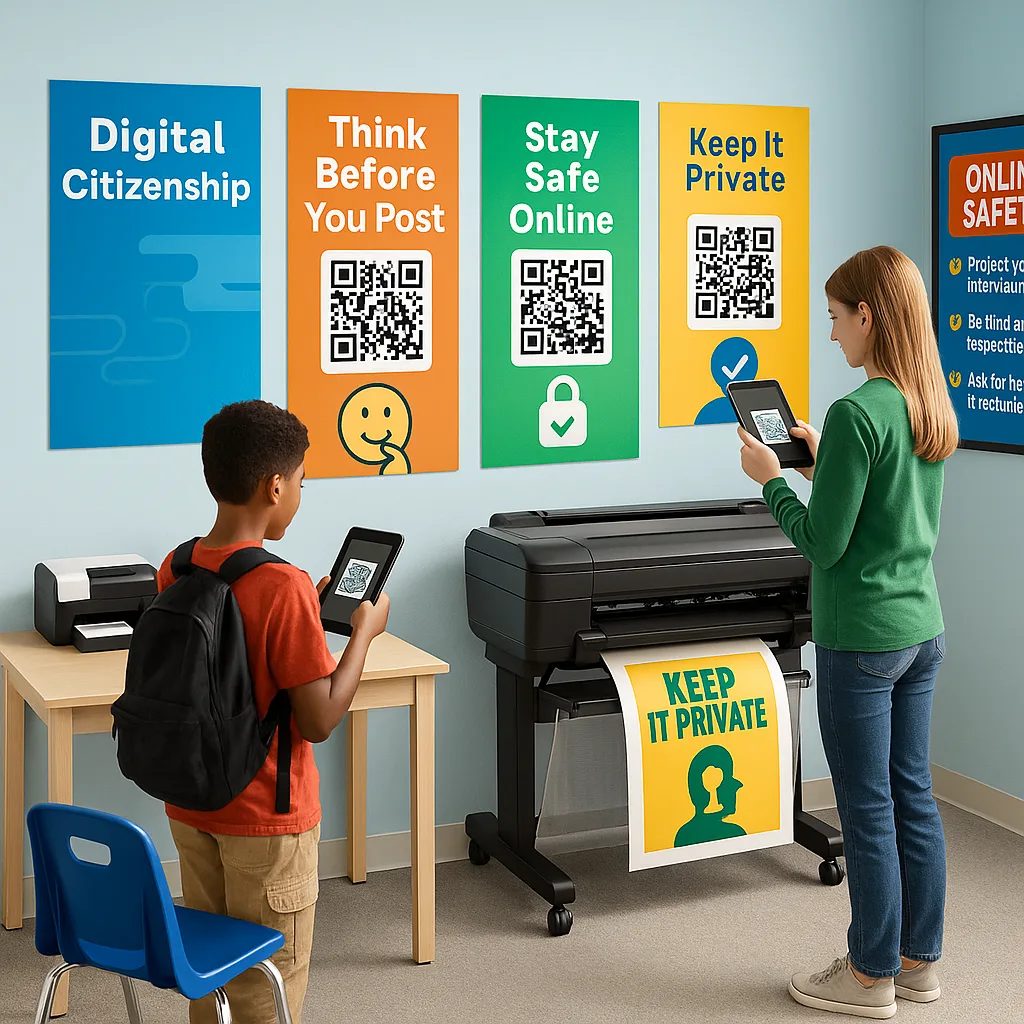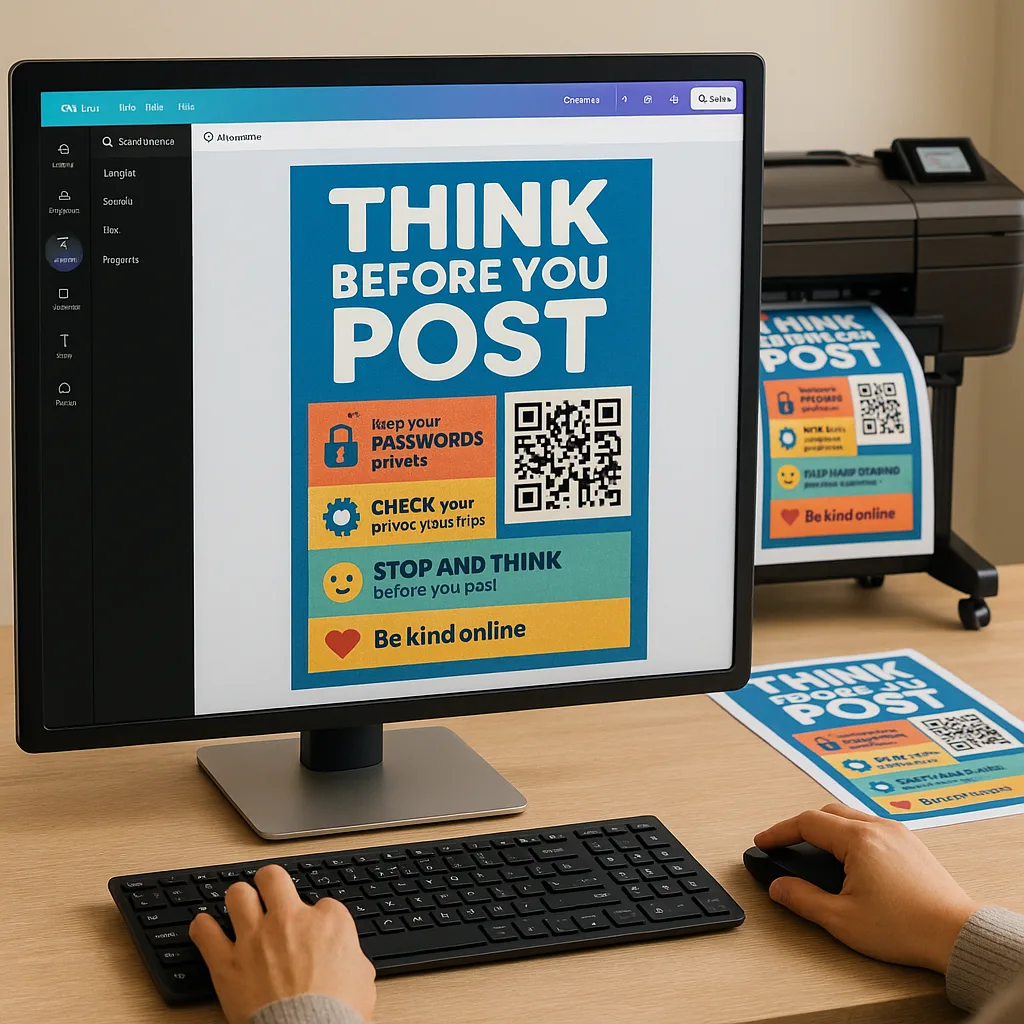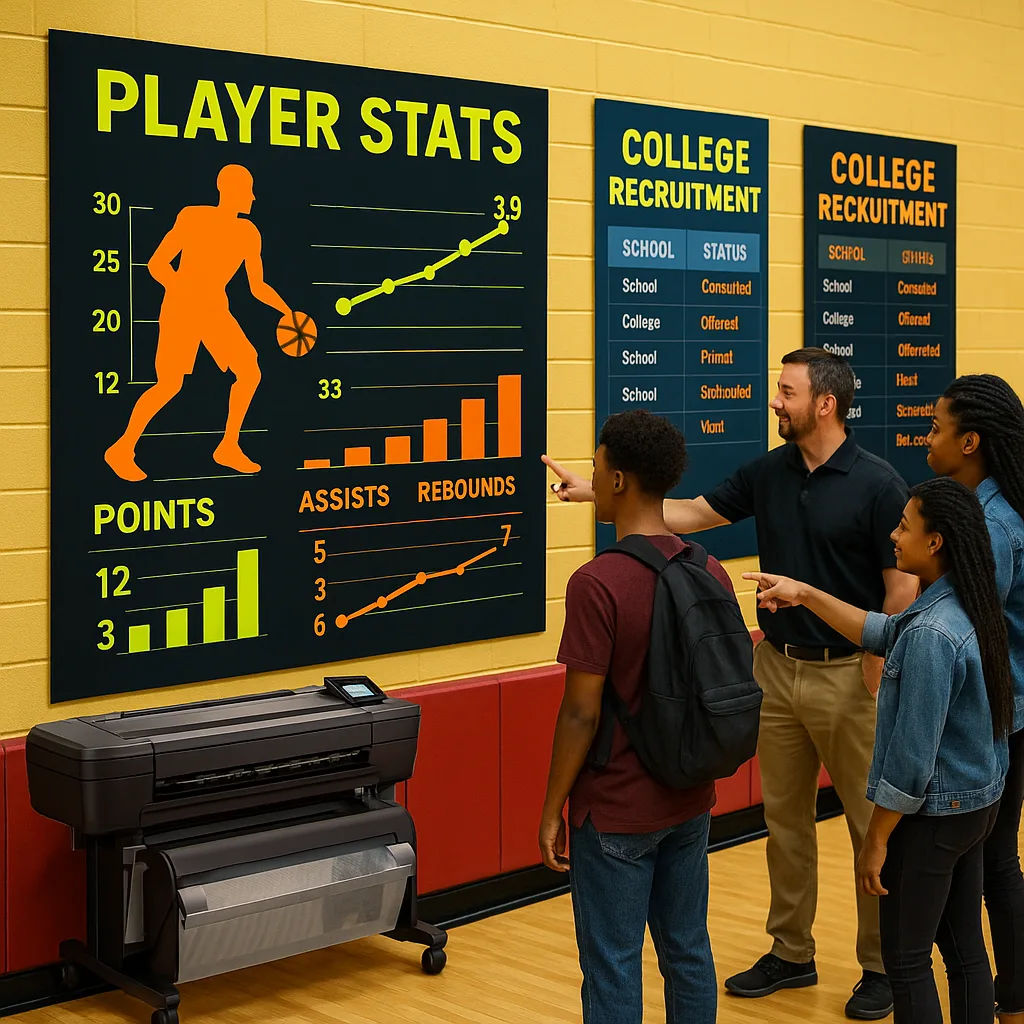
Creating an engaging digital citizenship learning space doesn’t require a massive budget. With just $500 and the right approach, you can transform any corner of your classroom or library into an interactive hub where students learn online safety through hands-on activities. When combined with a poster maker for schools digital citizenship initiatives, you’ll create displays that evolve with your students’ needs and keep them engaged in crucial conversations about online behavior.
Building Your Poster Maker for Schools Digital Citizenship Center on a Budget
Let’s break down exactly how to allocate your $500 budget to create maximum impact. First, you’ll need to consider the essential components: basic print-and-cut tools, materials for interactive displays, and ongoing supplies. The beauty of this approach lies in its flexibility—you can start small and expand as funding allows.
Here’s a practical budget breakdown that schools across the nation have successfully implemented:
Essential Hardware ($350-400): • Basic color printer with poster capabilities: $200-300 • Manual cutting tools and laminator: $100-150 • QR code scanner (tablet or old smartphone): $0-50
Initial Supplies ($100-150): • Paper and laminating sheets: $50-75 • Mounting materials and adhesives: $25-35 • Storage and organization: $25-40
By investing in versatile tools rather than single-use items, you create a sustainable system that grows with your program. Moreover, partnering with a company like Poster Studio Express can help you understand the true poster making machine price and long-term value proposition.
Interactive QR Code Poster Templates
QR codes transform static posters into gateways for deeper learning. Students can scan codes to access videos, interactive quizzes, or age-appropriate resources. This approach particularly resonates with digital natives who expect technology integration in their learning experiences.
Creating effective QR code posters requires thoughtful design. Start with clear, bold headers that grab attention. Place QR codes prominently but ensure surrounding text explains what students will find when they scan. Include brief instructions for first-time users, as not all students may be familiar with QR technology.
Consider these proven template categories: • Password Safety Stations: Interactive guides for creating strong passwords • Digital Footprint Trackers: Activities showing how online actions leave traces • Cyberbullying Response Centers: Resources for victims and bystanders • Privacy Settings Tutorials: Platform-specific guidance for popular apps
of students report better retention with interactive visual displays

Student-Led Content Creation Strategies
Empowering students to create their own digital citizenship materials transforms them from passive consumers to active advocates. This peer-to-peer approach often resonates more deeply than adult-created content. Furthermore, when students explain concepts to their peers, they internalize the lessons more effectively.
Start by forming a Digital Safety Squad—a group of student volunteers who meet weekly to brainstorm poster ideas. Provide them with templates and guidelines, but let their creativity shine. Students often identify online safety concerns that adults might overlook, such as specific gaming platforms or social media trends.
The Education Express 24 Desktop Poster Printer makes student-led creation particularly accessible. Its compact design fits perfectly in a classroom corner, while the intuitive interface means students can operate it with minimal supervision after initial training.
Design Phase
Students brainstorm topics and create rough draftsImplementation Tips
• Schedule regular design sessions • Provide digital citizenship rubrics • Encourage peer feedback • Document the creative processProduction Phase
Transform designs into professional postersQuality Guidelines
• Test all QR codes before printing • Use high-contrast color schemes • Laminate for durability • Create multiple sizes for different spacesTeaching Phase
Students present their work to peersPresentation Skills
• Practice presentation skills • Create talking points • Develop interactive activities • Gather peer feedbackAge-Appropriate Resource Integration
Different age groups require tailored approaches to digital citizenship education. Elementary students need concrete examples and simple language, while high schoolers can handle nuanced discussions about digital ethics and online reputation management.
For K-2 students, focus on basic concepts like “think before you click” and “ask a trusted adult.” Create colorful posters featuring cartoon characters demonstrating safe online behaviors. QR codes might link to short animated videos or simple interactive games.
Middle school content should address social media pressures, cyberbullying prevention, and digital footprint awareness. These students respond well to real-world scenarios and case studies. Consider creating “what would you do?” posters that present ethical dilemmas.
High school materials can delve into complex topics like digital activism, online privacy rights, and preparing professional online profiles. Include QR codes linking to college admissions articles about social media screening or career-focused LinkedIn tutorials.
Maximizing Your Investment with Professional Equipment
While starting with basic tools works well, upgrading to professional equipment dramatically expands your capabilities and reduces long-term costs.
Education Express 36″
Perfect for creating large-format safety displays that command attention in hallways and common areas.
Education Flex 30
Print and cut capabilities enable creation of custom stickers, badges, and interactive elements for your digital citizenship program.
Calculate your total cost of ownership with our cost analysis tool.
Implementation Timeline and Milestones
Creating a successful digital citizenship center doesn’t happen overnight. However, with proper planning, you can have a functional space within two weeks and a thriving program within a month. Here’s a proven timeline that schools across the country have successfully followed:
Week 1: Setup and Infrastructure Begin by selecting your space and ordering essential supplies. While waiting for deliveries, create your first batch of QR codes and design templates. Reach out to IT staff for help with WiFi access and device setup. Start recruiting student volunteers who show interest in technology and peer leadership.
Week 2: Initial Content Creation Once your basic equipment arrives, create your first set of posters. Focus on evergreen topics like password safety and respectful online communication. Test all QR codes thoroughly and laminate finished posters for durability. Install your first displays in high-traffic areas where students naturally congregate.
Week 3: Student Training and Expansion Train your Digital Safety Squad on equipment use and content creation guidelines. Let them brainstorm topics relevant to current online trends. Create a content calendar to ensure regular updates and seasonal relevance. Begin collecting feedback from both students and teachers about display effectiveness.
Week 4 and Beyond: Program Evolution Establish regular creation sessions where students design new materials. Rotate displays to maintain freshness and engagement. Track which QR codes get scanned most frequently to understand student interests. Consider expanding to other areas of the school as the program gains momentum.
Ready to Create Your Digital Citizenship Center?
Transform your school’s approach to online safety education with professional poster-making tools designed specifically for educators.
Sustaining Your Digital Citizenship Program
Long-term success requires planning beyond the initial setup. Create systems that ensure your digital citizenship center remains relevant and impactful throughout the school year. Consider forming partnerships with your school’s technology committee or PTA to secure ongoing funding for supplies.
Document your successes through before-and-after photos, student testimonials, and usage statistics. These materials prove invaluable when requesting budget increases or applying for grants. Many schools find that their initial $500 investment pays for itself through reduced outsourcing costs for safety materials.
Remember that the best poster maker for schools digital citizenship programs are those that evolve with student needs. Stay informed about emerging online platforms and digital trends. Regularly survey students about their online experiences and concerns. This feedback loop ensures your displays address real challenges rather than assumed problems.
Finally, celebrate your student creators. Display their names on posters (with permission), feature their work in school newsletters, and recognize their contributions at assemblies. When students feel ownership over the program, they become your most effective ambassadors for digital citizenship throughout the school community.









